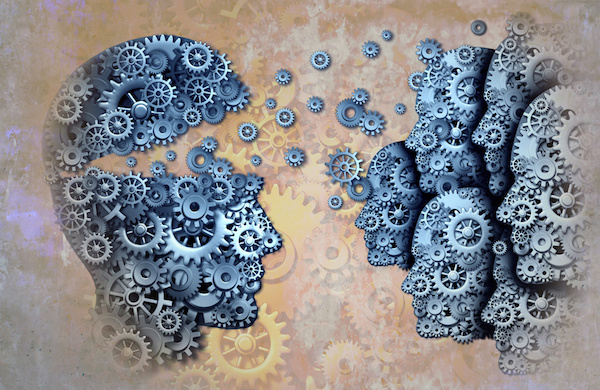Help! Historical data does not help with modelling the COVID-19 world
Most of what we call artificial intelligence is a lot more artificial than it is intelligent. This could be because it’s just rebranded old technology, it’s a clever way to simply take a programmer’s knowledge of the problem and automate that knowledge or its focused on learning from crunching loads of historical data. On the last point – what happens when the past no longer corresponds with the present or future?
Sometime in February the world changed dramatically. Companies are laying off millions of employees. Parents find themselves struggling to balance work and homeschooling. The warmth of human contact grew perilous. Planes, trains and highways emptied out. A booming economy collapsed. Nursing homes that sheltered the elderly and vulnerable transformed into combat zones.
Such a sudden shift poses an unprecedented challenge to the multi-trillion dollar potential of the artificial intelligence industry, according to Research firm Gartner. That’s because the vast majority of AI applications mine deep historical data, and questions based on past experience, to draw insights.

In light of how quickly the world has changed, CIOs and CTOs need to ponder hard questions.
What good are conclusions based on historical data if next month will look nothing like the last one?
Needing to figure it out fast
This might seem like an esoteric problem, particularly amid the larger challenges we all face. In fact, the implications are far reaching. Companies are using AI for an ever-growing range of applications, many of them critical in today’s precarious environment.
Banks use AI to root out financial crime, understand their customers, trade and arbitrage, predict risk and make sure they have enough cash on hand to meet their obligations. Achieving the latter has become a far bigger challenge in recent weeks.
Retailers use the technology to power recommendation engines, boost customer loyalty and make purchasing forecasts. Retail may not seem like a critical sector, but optimising sales could help ward off bankruptcy — with all the destruction that it can bring — at a time when the economy has gone into deep freeze.
In defense and industrial sectors AI is really making solid inroads in predicting asset corrosion and failure, industrial safety and making timely sense of the huge numbers of IoT sensors and sources that were so chaotically deployed over the last decade.
The deficiencies of current approaches were exposed, but now AI is also beginning to help save lives on the front lines of the Covid-19 crisis. Hospitals use the technology to determine how to conserve precious resources and effectively cure patients.
In light of how quickly the world has changed, CIOs and CTOs need to ponder hard questions. They need to ask, how well does my AI perform in the midst of a black swan event? Are the insights we are working with still relevant? Or is the technology preparing us to fight last month’s battles?
A cold start
To harvest value effectively at a moment when tomorrow bears little resemblance to yesterday, companies need to be able to react to events that broadside them without warning. They need what we call “cold start AI” — AI that offers immediate, actionable insights without depending on deep historical data.
Banks, for instance, need to determine how to position their liquidity as contagion from credit to liquidity spreads. Certainly 2008 and 2009 offer some data but the wholesale stop of consumer purchasing is something completely unprecedented in financial models. And commerce itself is changing with all retailers being forced learn how to market to customers and cover costs when all sales have suddenly migrated online. Again, a trend we have seen for the last decade but not to the degree of existential threat created by the consumer vanishing from the high street.
Hospitals need to be able to mine electronic medical records (EMR) to assess which treatment options work best for a nascent scourge that’s quickly filling emergency departments. They need to be able to discern which situations put providers at the highest risk, and how to best protect them. Moreover, as healthcare is forced to go on-line data security and privacy regulations are losing effectiveness at best, are preventing effective remote healthcare at worst. These regulations and data privacy as a whole are all need to be revisited.
Underpinning cold start AI is technology that marries two distinct disciplines of artificial intelligence: “multi-dimensional, unsupervised machine learning” and “topological data analysis,” or TDA.
How it works
Unsupervised machine learning helps identify weak, and often unknown signals in data. Essentially it comes before supervised learning, removing bias and the hypothesis that so often if needed and alas so often undermines the value of the solution from the very beginning. Unsupervised learning lets the data take you on a journey of discovery, the shape of data showing events, entities, trends that are unique and important, and previously unknown.
Most importantly, because of the way the technology models data, unsupervised machine learning and TDA can draw conclusions in real-time, relying on a data sets representing a far shorter period of time. For companies, this type of AI delivers a rapid signature-to-insight timeframe. Unlike supervised learning applications — where the application is painstakingly taught what to look for, for instance — there’s minimal human intervention needed before the application begins offering insights.
For organizations struggling to cope in the current black swan environment, this technology enables insights that are rich and relevant, despite the fact that the world has changed so dramatically. Quicker, simpler, deeper in insight.










































